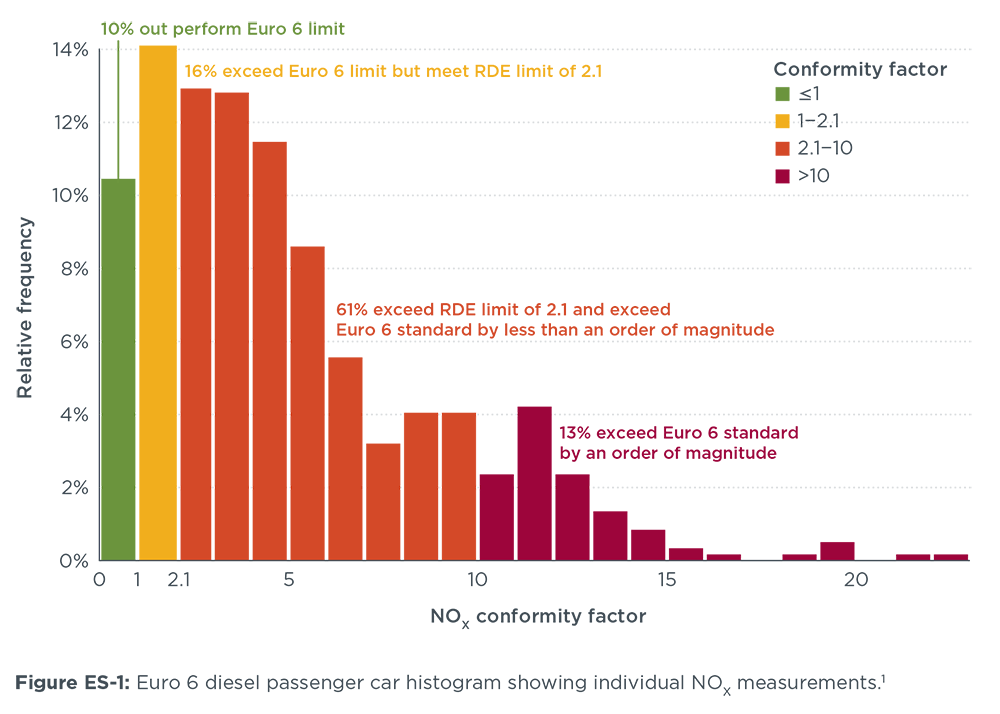White paper
Road tested: Comparative overview of real-world versus type-approval NOX and CO2 emissions from diesel cars in Europe
In September 2015, when the news broke about the illegal defeat device used by Volkswagen in the United States, no systematic overview of real-world NOx emission levels by vehicle manufacturer and model had ever been carried out in Europe. Over the ensuing two years, a number of government agencies across Europe began to systematically test diesel cars for their emission levels.
This white paper compiles the test results so far, for a total of 541 Euro 5 and Euro 6 diesel passenger cars. All emission measurements were conducted under real-world conditions, often following the real-driving emissions (RDE) testing procedure that came into force in September 2017. The majority of testing was carried out using portable emissions measurement system (PEMS) devices for recording emissions.
For the Euro 5 diesel cars tested, the average conformity factor was 4.1, meaning that the actual emissions are more than 4 times the legal limit of 180 mg/km. For Euro 6 diesel cars, the average emission level was 4.5 times the legal limit of 80 mg/km. The difference between individual vehicle models is particularly remarkable, with some Euro 6 diesel cars emitting less NOx than the limit, while others exceed the regulatory limit by a factor of 12. Only 10% of tested Euro 6 vehicles would meet the Euro 6 limits on the road.
The analysis not only includes NOx testing results but also adds information on the real-world carbon dioxide (CO2) performance for each vehicle model. For the Euro 5 and Euro 6 vehicles included in the study, covering the model years 2011 to 2015, the average CO2 divergence was approximately 30%. The discrepancy among newer vehicles is even higher, with 2015 passenger cars on average emitting 40% more CO2 and consuming 40% more fuel than advertised.

